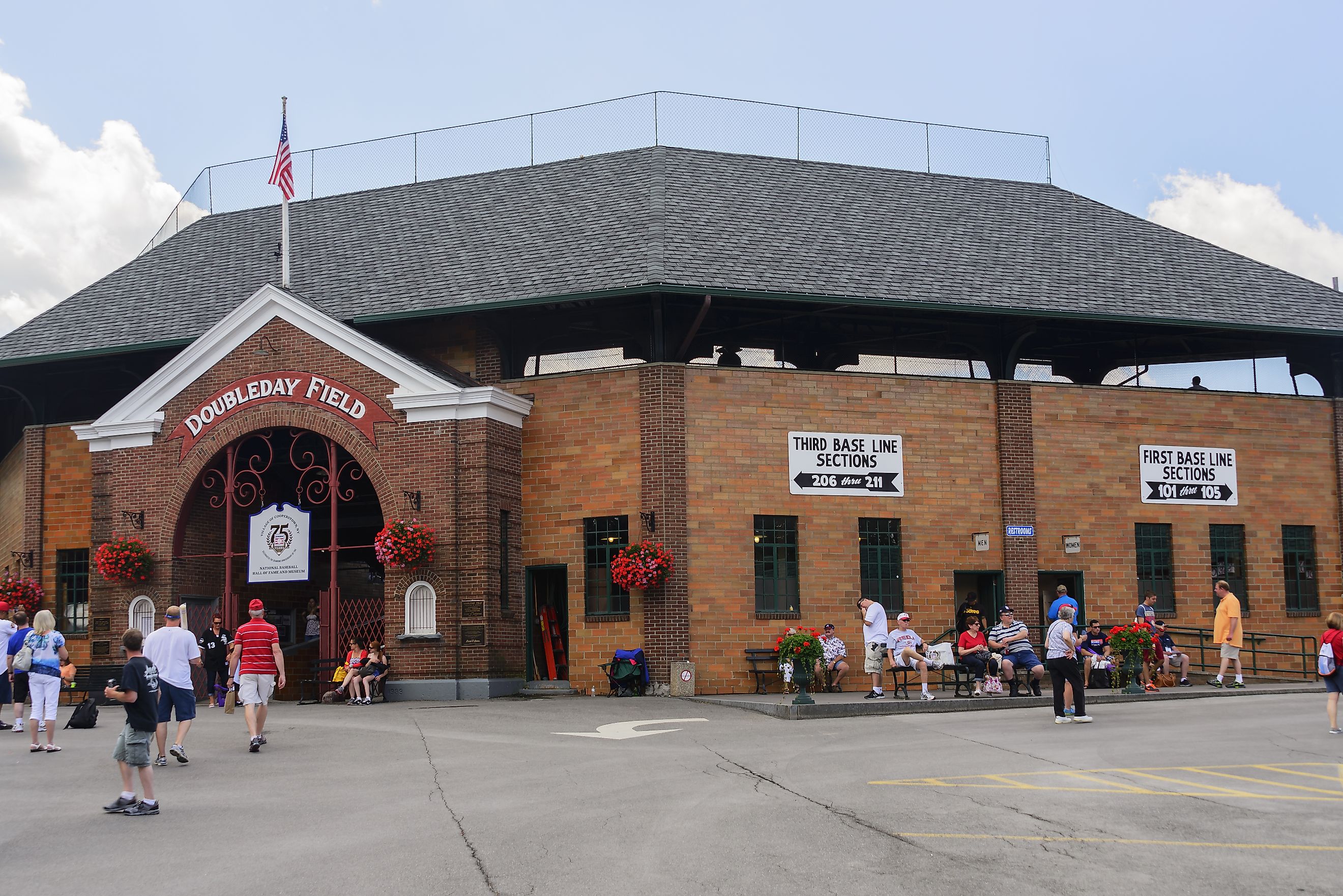
The Home Of American Baseball And Its National Hall Of Fame
There’s probably no other town in the United States more closely associated with classic Americana charm than Cooperstown, New York, a small village of less than 2,000 residents between the Adirondack and Catskill Mountains. In Otsego County, on the shores of Otsego Lake, the town offers a picturesque setting that evokes nostalgia and a sense of timelessness. Brick-lined streets, vintage storefronts, and locally owned businesses give this community a warm, inviting atmosphere.
Cooperstown is best known as the “Home of Baseball,” but the town has a rich history that blends literature, tourism, and “America’s pastime.” It was named after William Cooper, its founder, who established the settlement in 1786. Cooper was the father of James Fenimore Cooper, one of America’s first major novelists, who immortalized the area in his series, the “Leatherstocking Tales,” including “The Last of the Mohicans.” He also referred to scenic crystal-clear Otsego Lake as "Glimmerglass," inspiring a world-renowned month-long opera called Glimmerglass Festival. In 2025, the festival will celebrate its 50th anniversary from July 11 to August 17, 2025.
Who Invented Baseball?
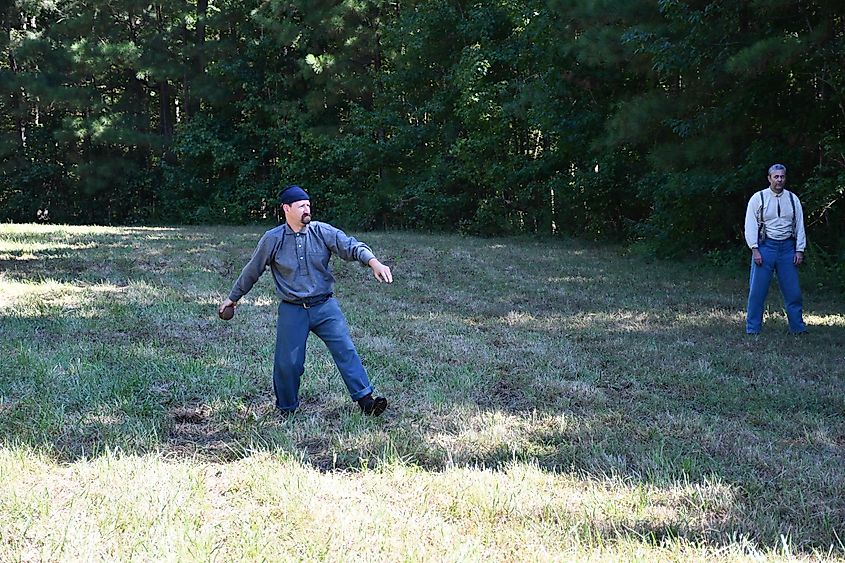
Portrayal of a game of rounders at Petersburg National Battlefield.
There’s no easy answer to the question of who invented baseball without a quick look at its storied history and the various countries, towns, and players who have all stepped up to the bat to claim the title. The game evolved from games played with bats and balls in England in the mid-18th century, like Rounders, Base Ball, Stoolball, or Tut-ball. In 1744, a book by John Newberry called “A Little Pretty Pocket-Book” (considered the first children’s book) first used the term “base-ball,” followed by the rhyme:
“The Ball once struck off,
Away flies the Boy
To the next destin’d Post,
And then Home with Joy.”
In Canada, two teams battled in Beachville, Ontario, in what’s generally recognized as one of the first documented games in North American history on June 4, 1838. A former resident of St. Marys, Ontario, home to the Canadian Baseball Hall of Fame, later recounted details of a game played on a square field in a pasture and featured five bases, fair and foul balls, a hand-hewn stick used as a bat, and a ball made of twisted yarn covered with calfskin.
The Abner Doubleday Myth
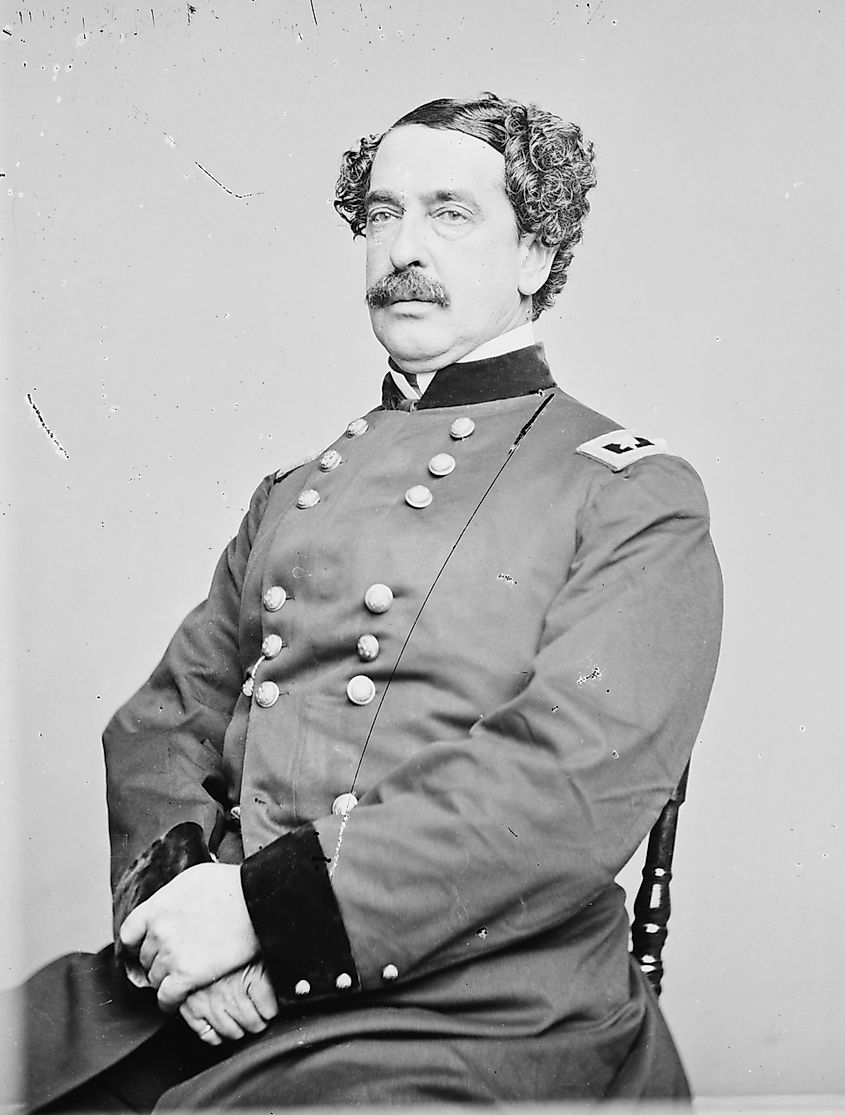
Portrait of General Abner Doubleday.
Cooperstown became synonymous with baseball, based on a long-held belief that the game of baseball was invented there in 1839 by Abner Doubleday, a decorated army officer who defended Fort Sumter at the start of the Civil War and later served at the Battle of Gettysburg. This idea was promoted by Albert Goodwill Spalding, an American pitcher, manager, and co-founder of the Spalding sporting goods empire in the early 20th century, to establish a feel-good, all-American origin for the sport. In reality, Abner Doubleday had no connection to the invention of baseball at all, but the story-turned-myth helped solidify this town's reputation.
The Birthplace of Baseball
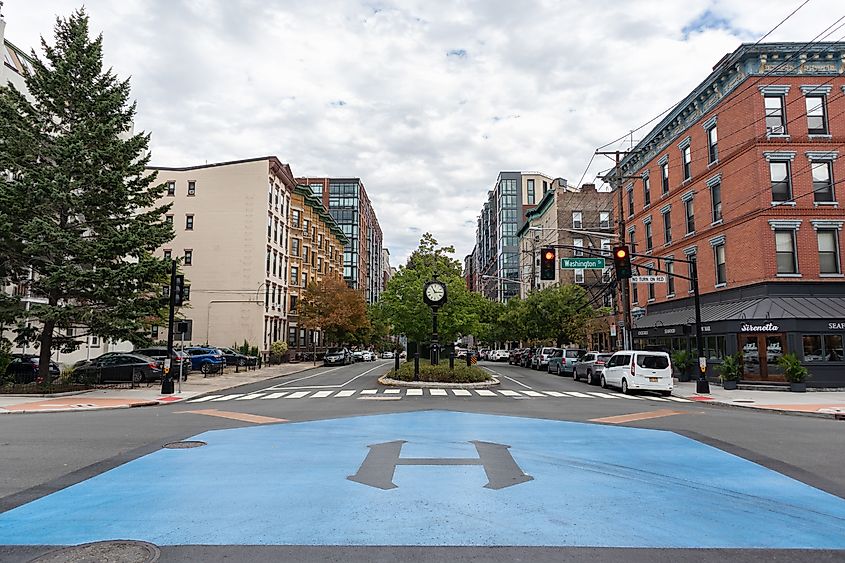
Site of the first organized baseball game at the former Elysian Fields in Hoboken, NJ. Editorial credit: James Andrews1 / Shutterstock.com
While Cooperstown is often considered the "official" home thanks to the establishment of the National Baseball Hall of Fame and Museum, it is not the actual birthplace of the game. The town of Hoboken, New Jersey, claims the title of “Birthplace of Baseball” because the first recorded U.S. baseball game was played there on June 19, 1846, at Elysian Fields between the New York Base Ball Club and the Knickerbocker Club. The Knickerbocker Club was owned by Alexander J. Cartwright, who is credited with developing the rules of the game known as the “Knickerbocker Rules.” Today, some of the rules created by Cartwright still exist, including “three strikes and you’re out,” “foul ball,” and the term “to pitch.”
The National Baseball Hall of Fame and Museum
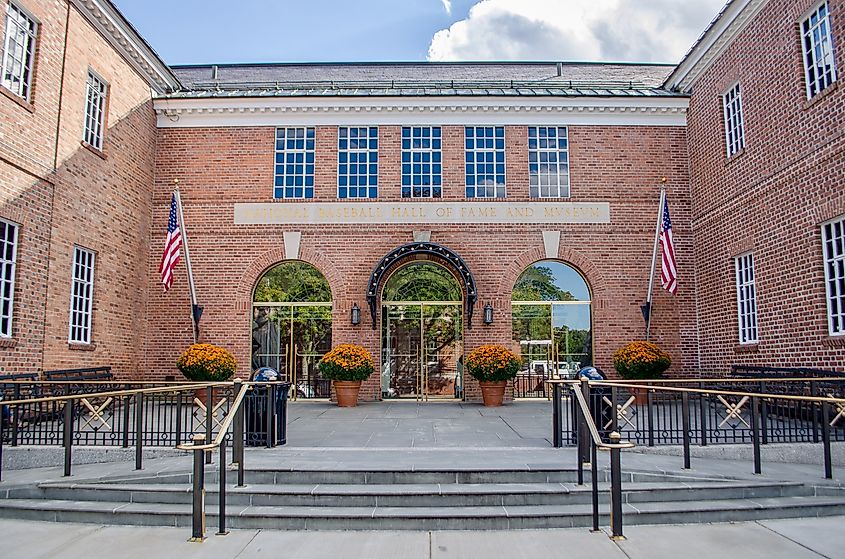
To celebrate the supposed centennial of baseball (based on the Abner Doubleday myth), the National Baseball Hall of Fame and Museum was established in Cooperstown in 1939. Its opening coincided with a renewed interest in the history of the sport. It honored the game’s most significant players, managers, and contributors, including the charismatic Babe Ruth, thought to be one of the greatest baseball players of all time, “Hammerin’ Hank” Aaron, and “Jackie” Robinson.
To date, the museum showcases 346 inductees and offers a deep dive into the history of the sport. There are plaques honoring the legends of the game and interactive exhibits where visitors can explore the evolution of baseball, including a look at memorabilia from iconic moments in baseball history. There’s also an annual Hall of Fame Weekend held in Cooperstown, with a Hall of Fame Parade of Legends, an Induction Ceremony, and a Legends of the Game Roundtable where new Hall of Famers reminisce with fans. The weekend event attracts over 25,000 baseball fans from around the globe and will take place July 25 to 28, 2025.
Baseball Landmarks
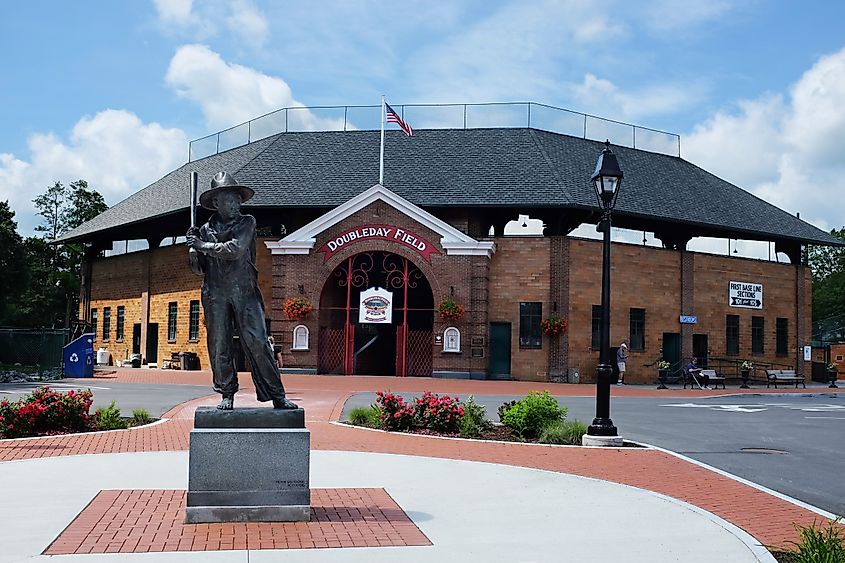
Sandlot Kid statue at near the Doubleday Field in Cooperstown. Editorial credit: Steve Cukrov / Shutterstock.com
In addition to the National Baseball Hall of Fame and Museum, visitors to Cooperstown are invited to wander through town to various baseball-related sites to learn about the game's history and cultural significance firsthand.
A must-see landmark is the Doubleday Field—the historic baseball diamond named after Abner Doubleday. It was first used to host the game in 1920. While major league games are no longer held there, baseball fans continued to visit Doubleday Field to pay homage to baseball and also to cheer on the local collegiate summer team, the Cooperstown Hawkeyes, until 2014.
The Cooperstown Bat Company was established in town in 1981 and is the third oldest bat company in the United States. There’s a retail store on Main Street downtown. Serious baseball lovers can travel fifteen minutes from town to visit the Cooperstown Bat Company's Bat Factory to see a bat-turning demonstration. Finally, the Heroes of Baseball Wax Museum features over 30 life-size wax figures of everyone from Babe Ruth to Marilyn Munroe and many more.
The Intersection of Art and Baseball
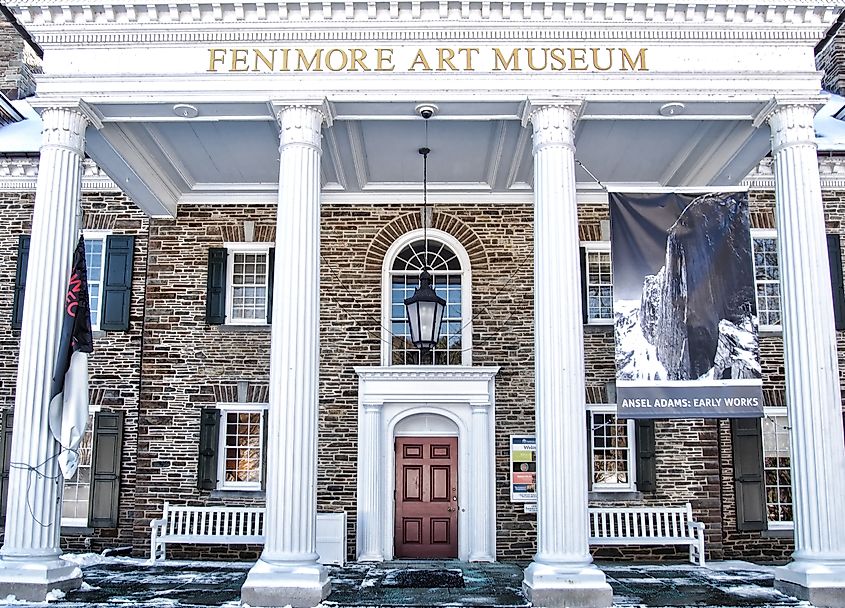
Cooperstown is also the home of a fine collection of American art, James Fenimore Cooper memorabilia, and historical photographs at the Fenimore Art Museum, inside a neo-Georgian mansion with terraced gardens overlooking Otsego Lake. The Farmers' Museum is a history museum with over 23,000 artifacts depicting rural life circa 1845. Visitors can explore a historic village with a blacksmith shop, a church, Dr. Thrall’s Pharmacy, Todd’s General Store, and more. The farm belonged to James Fenimore Cooper.
Art lovers and baseball fans can stop by for a craft beer at one of this town's many microbreweries. The Cooperstown Tap House serves craft beer from its rotating menu of golden ales, imperial Stouts, and Vienna Lagers. Brewery Ommegang brews fine Belgian-style ales all year round.
A Timeless Tribute to Baseball and Culture
Cooperstown, New York, is celebrated as the "Home of Baseball" and renowned for its Americana charm, picturesque setting, and rich history. On Otsego Lake, the village blends literary significance with its deep ties to America’s pastime. Though the myth of Abner Doubleday inventing baseball there has been debunked, it helped establish this town's reputation. The National Baseball Hall of Fame and Museum, founded in 1939, honors baseball legends and attracts fans worldwide. Iconic landmarks like Doubleday Field, the Cooperstown Bat Company, and the Heroes of Baseball Wax Museum further solidify its cultural and historical significance.











